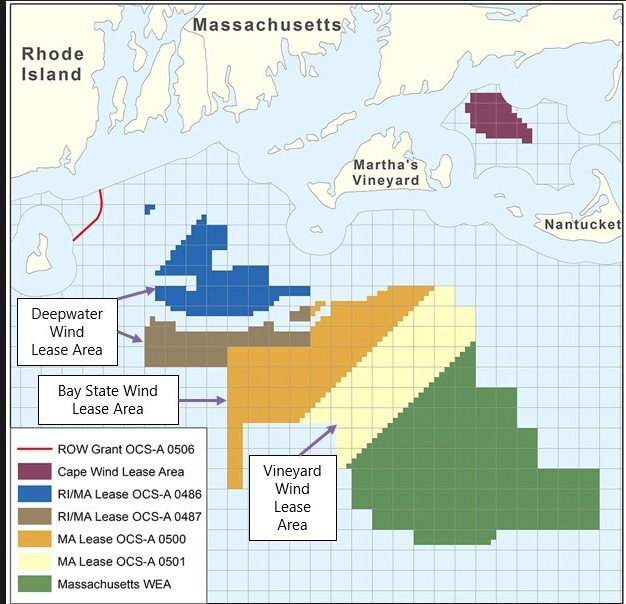A sweeping environmental review of the Vineyard Wind offshore wind project is now tracking to be finalized Jan. 15, as the federal Bureau of Offshore Energy Management completes its review of public comments.
BOEM received more than 13,000 comments on its Supplemental Environmental Impact Statement for Vineyard Wind, a planned 800-megawatt turbine array off southern New England, according to an agency spokesperson.
The final EIS is to be published Dec. 11, with the agency issuing its final record of decision Jan. 15 – a month’s delay for the report long-waited by the offshore wind supporters and its critics alike.
The second BOEM study was ordered up by Interior Secretary David Bernhardt in August 2019, after the National Marine Fisheries Service Greater Atlantic regional office refused to sign off on the first one. The supplemental study also looked at potential cumulative impacts of Vineyard Wind and 14 other potential wind projects now at various stages off the East Coast.
The mass of public commentary is one more among tasks that have repeatedly delayed regulators. But wind industry advocates in recent weeks expressed confidence that BOEM will complete the review, and analysts predict offshore wind developers would get a big boost from an incoming Biden administration.
“Minor delays like this are not uncommon and we look forward to publication of the FEIS (final environmental impact statement) on December 11,” said Vineyard Wind spokesman Andrew Doba. “We are confident that we’ll be able to make the investment decision by mid-2021 as planned and deliver the project in the announced time frame.”
The record of decision would come in the waning days of the Trump administration, with its mixed record on offshore wind. President Trump, who unsuccessfully tried to stop an offshore turbine near his golf club in Scotland, publicly belittled the technology – even as his own Interior and Department of Energy officials promoted it.
Along with the administration’s oft-stated policy of seeking more offshore drilling opportunities, BOEM made lease sales that could be developed into working wind energy projects from Massachusetts to Virginia by the mid- to late 2020s. The agency is working to outline more potential lease areas off California and Oregon, and Maine recently obtained a federal grant to help state energy officials plan for floating wind turbines in the deepwater Gulf of Maine.
A Biden administration would make climate change a top priority, bringing in policy choices that could prioritize wind power development over traditional offshore oil and gas. International energy analysts Wood Mackenzie project that may step up the pace of offshore wind turbine construction in U.S. waters by 30 percent by 2030.







